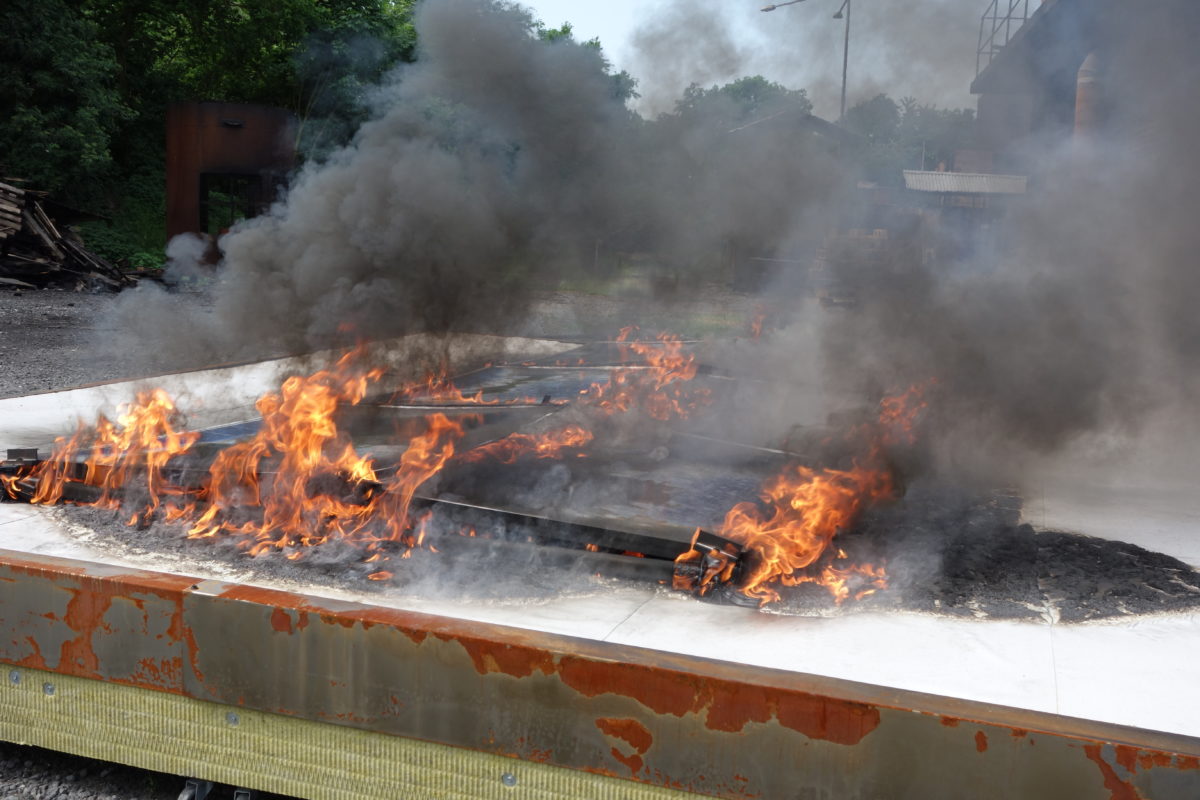An international group of scientists has created a new model to identify the most significant causes of fire at the component level and various failure patterns related to fire accidents in rooftop PV systems.
“Our model is applicable to all sizes of rooftop PV, as it compares the annual number of fires with the national capacities, rather than the number of installations,” research co-author, Jens Steemann Kristensen, told pv magazine. “This makes a lot of sense, as the number of components, and thus possible sources of ignition, is assumed to be proportional with the size of the PV system.”
The proposed model is based on fault tree analysis (FTA), which is a graphical tool aimed at identifying potential causes of system failures before failures occur. FTA shows the logical relationship between a particular system failure and all its contributing causes.
The scientists said that that model initially evaluates the quantitative frequency of fire incidents caused by rooftop PV systems. They noted that the lack of quantitative data on fire accidents on a global scale is still an issue that prevents an exhaustive understanding of causes and effects in PV-related fires. A qualitative FTA analysis is then applied to assess system safety and reliability.
“The method has the potential to identify fault linkages in the system, highlight failure patterns before they arise, compare several designs for safety prioritization, help authorities evaluate overall hazards, and take decisions to avoid critical failures,” the researchers said.
Based on previous reports from Australia, Germany and the United Kingdom, the academics identified seven major events that can cause fires in PV systems. Six of the major events were caused by electric malfunctions in the components of the PV systems, whereas the seventh major event was an unrelated external ignition source.
Electrical arcing, which occurs in PV systems when a connection is broken while the PV is producing current, was identified as the most common cause of fire in rooftop solar arrays. This phenomenon occurs due to poor-quality products, planning and installation errors, component damage during transportation, operational errors, and infrequent inspections, among other minor factors. The connector was found to be the prime contributor for arcing in 17% of the analyzed PV-related fires.
“The quality of the workforce installing the PV system is assumed to have a significant influence on the failure rate,” said Steemann Kristensen.
A self-installed domestic system therefore might be more prone to failure than a high-end professionally installed commercial system, because studies have shown that professional installations on plants have higher quality. Qualitative research has also shown that annual fire incident frequency is 0.0293 fires per megawatt.
“When talking about a technology being safe or not, we talk about the risk related to the technology,” Steemann Kristensen said. “With risk being the product of probability times consequences, we must accept that the PV system affects both quality and quantity.”
He added that rooftops without PV systems are not designed to facilitate flame spread, but when a PV system is added to a roof, a semi-enclosure is created between the back of the PV modules and the upper surface of the roof.
“The introduction of a semi-enclosure is a significant change of the fire dynamic scenario, as heat from the initial fire is re-radiated back towards the surface of the roof, whereupon the fire can spread on the roof.” Steemann Kristensen stated. “It is important to emphasize, that it is not necessarily the PV system that burns, but the PV modules, as a physical object, facilitate flame spread on top of the roof construction.”
The academics also noted a recent fire accident at a Walmart facility in the United States. “This type of pitfall might have severe consequences for the society and be crucial for the implementation of PV systems into the built environment,” they said.
Steemann Kristensen said the expected consequences of the PV technology are largely positive because they contribute to higher sustainability, for example. However, to ensure continuous growth of the technology, it is essential to understand the expected and unexpected consequences, including fire-related risks, as a lack of understanding might have severe long-term consequences.
“That makes the paper very relevant, and it is therefore suggested in the conclusion of the paper that the National Fire and Rescue services implement two PV-related questions into their post-incident reports,” he concluded.
The scientists described the model in “Fault tree analysis of fires on rooftops with photovoltaic systems,” which was recently published in the Journal of Building Engineering. The research group includes scientists from Universiti Putra Malaysia, the Technical University of Denmark, and the University of Edinburgh in the United Kingdom.
This content is protected by copyright and may not be reused. If you want to cooperate with us and would like to reuse some of our content, please contact: editors@pv-magazine.com.




It should be noted that PV related fires are almost exclusively caused by faults in string inverter based systems in which DC voltages are running at levels that will support a sustained arc. It would be good to provide statistics for fires in micro-inverter based systems, that run at much lower DC voltages as compared to string inverter systems.